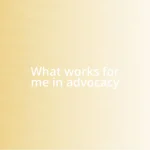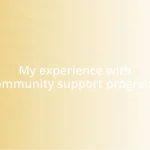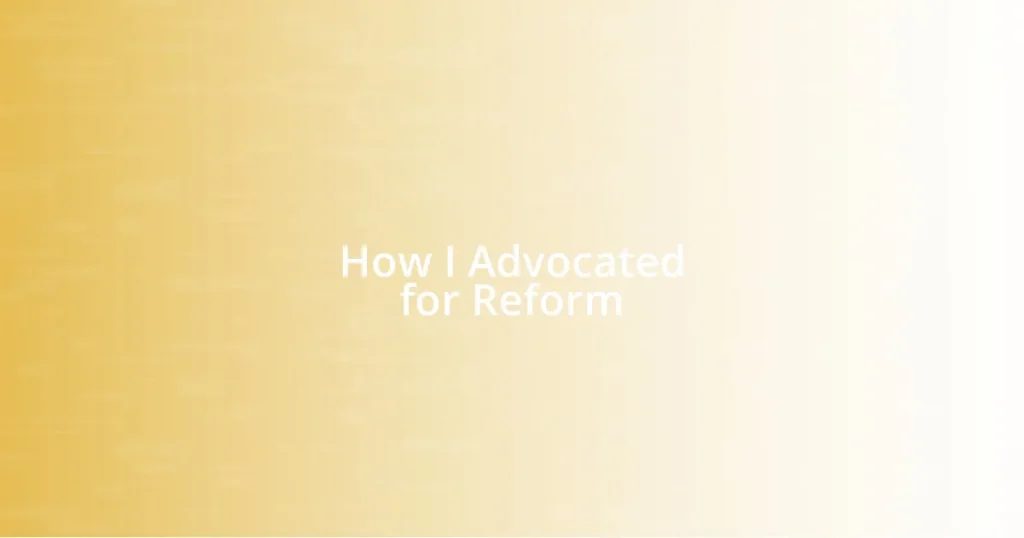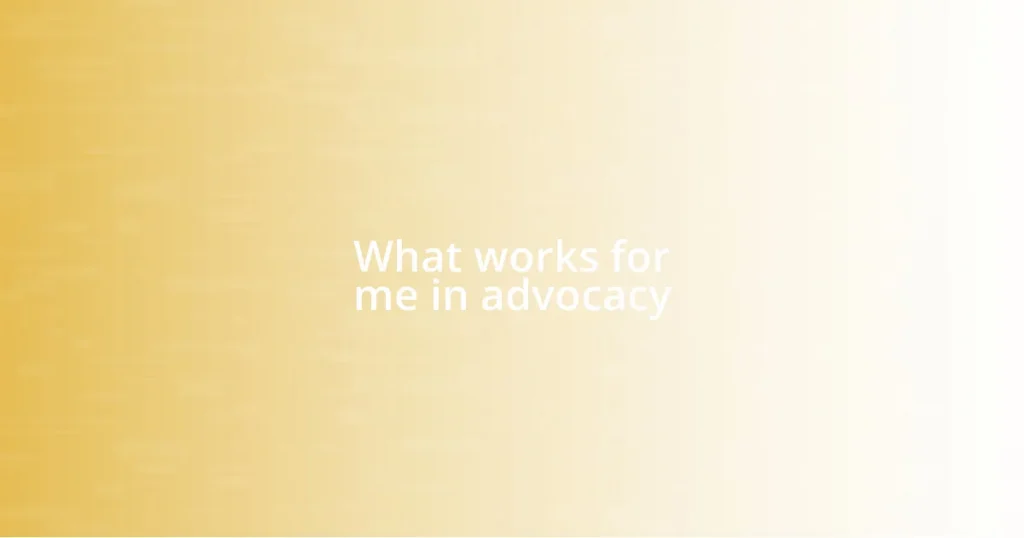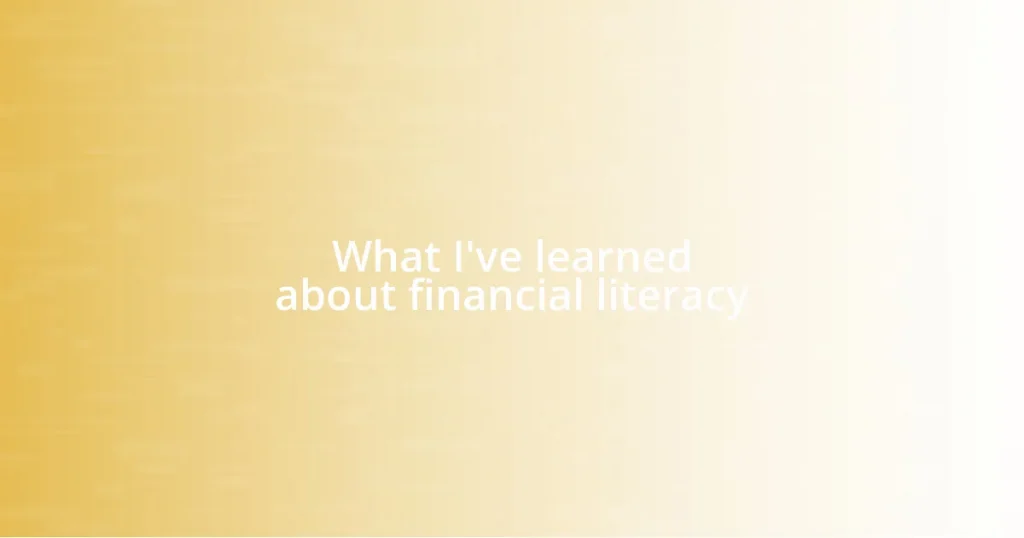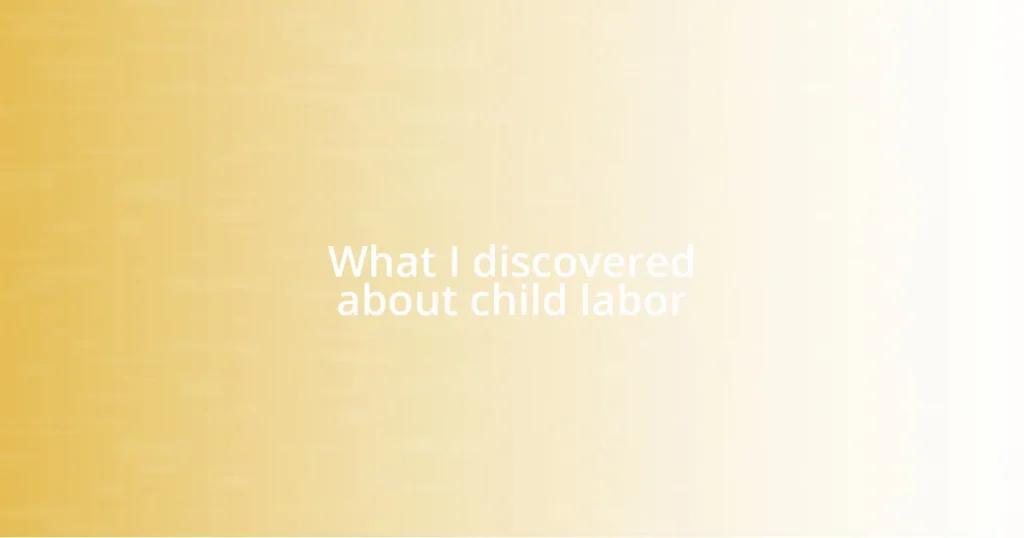Key takeaways:
- Understanding the need for reform stems from firsthand experiences with systemic failures, highlighting the importance of awareness for meaningful change.
- Identifying key stakeholders, including community leaders, local officials, and residents, is crucial for effective advocacy and coalition building.
- Crafting an impactful advocacy message requires clarity, personal connection, and a strong call to action to mobilize community support.
- Leveraging social media platforms amplifies voices and engages the community, transforming localized issues into broader movements.

Understanding the need for reform
Understanding the need for reform is often born from witnessing failure firsthand. I remember attending a community meeting where issues that directly impacted our lives went unaddressed for far too long. It became clear to me then that ignoring systemic problems only perpetuates suffering and stagnation. How can we expect progress if we turn a blind eye to the needs of those around us?
As I delved deeper into the challenges we faced, I found myself grappling with frustration and urgency. I vividly recall my conversations with friends who felt powerless, saying, “What difference can I make?” Their comments echoed my own doubts but also ignited a spark in me. In that moment, I realized that awareness was the first step toward creating meaningful change.
Every time I reflect on those pivotal days, I feel a mix of hope and determination. It became evident that reform wasn’t just a buzzword; it was a lifeline for our community. The question that remained was, “What reforms did we need to embrace to truly uplift one another?” That’s when I understood that reform isn’t merely about policy change; it’s about acknowledging our collective voices and experiences.

Identifying key stakeholders involved
Identifying key stakeholders was a pivotal step in my advocacy journey. It became apparent to me that understanding who was involved wasn’t just about names and titles; it was about recognizing how these individuals and groups influenced the landscape of reform. I remember sitting down with a chart, pinning up names of community leaders, local business owners, and even the youth in our neighborhood. Each identified stakeholder held a unique perspective and power that could either drive change or hinder it.
Here’s a closer look at the key stakeholders I found essential:
- Community Leaders: They often have the most direct insight into the needs and struggles of the residents.
- Local Government Officials: Their legislative roles can significantly impact any proposed reforms.
- Nonprofit Organizations: They can offer resources and support in mobilizing the community.
- Business Owners: Their interests can align with community reform goals, making them pivotal allies.
- Residents: Directly affected individuals whose voices are crucial in shaping the reforms.
- Schools and Educational Institutions: Important stakeholders that influence the younger generation and provide a platform for advocacy.
Recognizing these connections made me realize how intertwined our fates were. Each stakeholder not only had a stake in the outcome but also brought an emotional layer to the table. For example, I recall a passionate discussion with a local business owner who shared how their livelihood depended on the very issues we were addressing. That sense of shared vulnerability and ambition was the glue that held our coalition together.

Crafting an effective advocacy message
Crafting an effective advocacy message hinges on clarity and relatability. In my experience, a powerful message resonates with emotions, as it connects with people on a personal level. I vividly recall a rally where I shared my story about a friend’s struggles with the system. Watching faces light up and nodding heads affirmed my belief that sharing personal anecdotes can break down barriers and foster empathy. How can we create impactful messages if we don’t tap into the human experience?
Moreover, tailoring the message to the audience is crucial. Recognizing who you’re speaking to and what matters to them can dramatically shift your approach. During a neighborhood forum, I noticed that residents were more engaged when I highlighted local effects rather than using general statistics. I vividly remember a moment when a parent stood up and shared how the lack of resources in our schools affected her child. That shared experience deepened the conversation and demonstrated how tangible our words could be.
Finally, it’s important to incorporate a call to action in your message. In my advocacy work, I learned that asking people to stand together brings a tangible sense of purpose. I often conclude my talks by inviting community members to take specific steps, like signing a petition or attending the next meeting. This not only empowers individuals but also strengthens the collective effort for reform. It transforms a solitary experience into a united front, and that feeling creates lasting change.
| Key Element | Description |
|---|---|
| Clarity | Focus on a simple, relatable message that cuts through jargon. |
| Personal Connection | Use anecdotes to engage and resonate emotionally with the audience. |
| Tailored Approach | Adjust your message according to the audience’s specific interests and concerns. |
| Call to Action | Encourage the audience to take meaningful steps to support the cause. |

Building coalitions for support
Building coalitions for support is not just about gathering people; it’s about creating a sense of shared purpose. I remember hosting an initial meeting with various stakeholders, each bringing their own set of concerns and hopes. It struck me how one person’s passion could ignite motivation in others—when a community leader shared a heartfelt story about their struggles to improve local health services, I could see the nods of agreement ripple through the room. How often do we underestimate the power of a shared vision?
As the coalition began to form, I made it a point to ensure everyone felt heard and valued. There was a moment during our discussions when a shy high school student who attended our meeting finally spoke up, sharing how the lack of safe spaces affected their peers. That moment was magical; it reminded me that real change often stems from the voices we least expect to hear. Their inclusion added genuine weight to our movement, reinforcing that every contributor, regardless of age or status, has vital insights to share.
Aligning our goals with the interests of stakeholders was essential too. I found that when we put the communal needs front and center, businesses and organizations were eager to collaborate. One local business owner proposed a partnership to fund educational workshops after understanding how it aligned with their company values. It felt invigorating to witness how tailored communication could foster alliances, reaffirming the idea that when we prioritize collective well-being, we not only strengthen our coalition but also amplify our capacity for impactful change.

Engaging in direct communication
Engaging in direct communication is all about building meaningful connections. I remember when I decided to have an open dialogue with local officials about school funding. Instead of just sending emails, I invited them to a casual coffee chat. It was astonishing to see how that setting broke down barriers. They opened up about their challenges, and I shared my concerns as a parent. That day, we moved from the usual formalities to genuine discussions about real impacts on our kids. How often do we miss out on opportunities simply because we stick to the conventional ways of communicating?
Listening is an equally important aspect of direct communication. During a community meeting, I made it a point to create space for everyone to express their thoughts. I still remember the moment an elderly resident recounted their experiences with the healthcare system. Their voice trembled, yet the wisdom and honesty in their words captivated the room. It reminded me that, sometimes, the most profound insights come from those who’ve lived through the hard times. Isn’t it critical to ensure every voice, especially those often overlooked, gets the spotlight?
I’ve learned that direct communication isn’t just about speaking; it’s a two-way street. Whenever I share my perspective, I encourage feedback. For instance, after presenting a proposal to a group of parents, I asked them for their thoughts. To my surprise, several offered innovative ideas that enhanced my initial plan. It was a beautiful exchange that reinforced a sense of ownership. Isn’t it incredible how collaboration can lead to better outcomes? Direct communication has this remarkable ability to turn individuals into a team, working toward a common goal.

Leveraging social media platforms
Leveraging social media platforms has become a powerful tool in advocacy. I vividly remember the first time I used Twitter to raise awareness about a local policy issue. With just a few well-placed tweets, I was blown away by the immediate responses from community members who felt compelled to share their own stories. It was an eye-opening experience to witness how quickly social media could amplify a single voice into a chorus of support. Have you ever considered how a simple hashtag could turn a localized concern into a larger movement?
One standout moment for me was when I coordinated an Instagram live session featuring experts discussing the proposed reforms. It felt so rewarding to engage directly with viewers in real-time, answering their questions and addressing concerns on the spot. I even had a follower share their personal story, which resonated with many watching. That live interaction not only enriched the conversation but also demonstrated the genuine connection social media can foster, bridging gaps that traditional advocacy methods often overlook.
In my experience, creating shareable content has been essential to expanding our reach. I started experimenting with infographics that simplified complex issues, making them digestible. When one of my posts went viral, I realized the sheer power of visuals in advocacy. It was thrilling to see people sharing and discussing the content, igniting conversations that might not have happened otherwise. Isn’t it fascinating how an image can encapsulate a message, sparking interest and action in a way that text alone sometimes cannot?
